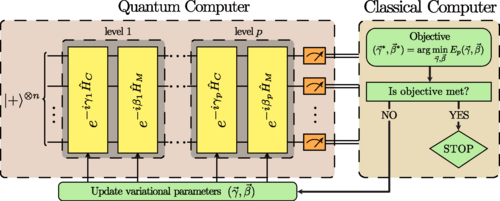Researchers from Wallenberg Centre for Quantum Technology, Chalmers University of Technology published an article in September 2020 on the application of the quantum approximate optimization algorithm (QAOA).

Airlines today are faced with a number of large-scale scheduling problems. One such problem is the tail-assignment problem, which is the task of assigning individual aircraft to a given set of flights, minimizing the overall cost. Each aircraft is identified by the registration number on its tail fin. In this paper, we simulate the quantum approximate optimization algorithm (QAOA) applied to instances of this problem derived from real-world data. The QAOA is a variational hybrid quantum-classical algorithm recently introduced and likely to run on near-term quantum devices. The instances are reduced to fit on quantum devices with 8, 15, and 25 qubits. The reduction procedure leaves only one feasible solution per instance, which allows us to map the tail-assignment problem onto the exact-cover problem. We find that repeated runs of the QAOA identify the feasible solution with close to unit probability for all instances. Furthermore, we observe patterns in the variational parameters such that an interpolation strategy can be employed, which significantly simplifies the classical optimization part of the QAOA. Finally, we empirically find a relation between the connectivity of the problem graph and the single-shot success probability of the algorithm.
https://journals.aps.org/prapplied/abstract/10.1103/PhysRevApplied.14.034009